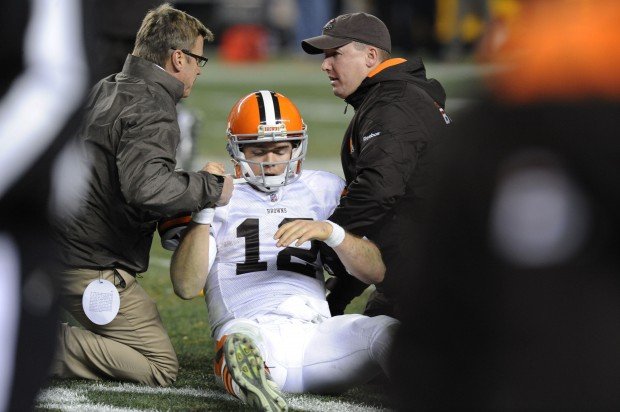The U.S. Supreme Court on Monday declined to hear a challenge to the National Football League’s estimated $1 billion settlement of concussion-related lawsuits with thousands of retired players brought by a small group of them who contend it is flawed.
The justices rejected an appeal of a lower court ruling in April upholding the settlement, which resolved litigation brought by players who accused the NFL of covering up information that tied head trauma like that suffered playing football to permanent brain damage.
The dozens of retired players challenging the settlement complained that it did not cover potential victims of a degenerative brain disease that scientists have linked to repeated blows to the head.
In upholding the settlement in April, the 3rd U.S. Circuit Court of Appeals in Philadelphia wrote that those challenging it “risk making the perfect the enemy of the good.” Under the settlement, the NFL does not admit guilt.
The deal was first approved in April 2015 by U.S. District Judge Anita Brody in Philadelphia. The settlement calls for payments of up to $5 million each to former players diagnosed with certain neurological disorders, but it does not address chronic traumatic encephalopathy (CTE), a condition that has been linked to concussions.
The lawsuit was brought on behalf of more than 5,000 retired players, though the settlement could cover more than 21,000 former players, according to the appeals court.
A smaller group of retired players objected to the agreement, saying it did not account for CTE. They also argued the deal unfairly favored currently injured retirees and left thousands of former players who have not yet been diagnosed with neurological diseases without a remedy.
The objectors included Scott Gilchrist, the son of retired player Carlton Chester “Cookie” Gilchrist, a Buffalo Bills running back in the 1960s whose lawyers say died from CTE at age 75 in 2011.
The NFL has come under increasing pressure in recent years from fans, politicians and parents to address the link between playing the sport and head trauma. The league has announced it will spend hundreds of millions of dollars to study ways to improve player safety and has taken steps to outlaw some of the game’s most brutal hits.
CTE, a progressive degenerative disease of the brain seen in athletes and others with histories of repetitive brain trauma, has been discovered during autopsies on several former players.
They included Hall of Fame linebacker Junior Seau, who committed suicide, and safety Dave Duerson, who played on the all-time great 1985 Chicago Bears defense and later committed suicide. In March, the NFL for the first time acknowledged a link between football and CTE.
But the appeals court noted that the research surrounding CTE is still nascent, with no current way to test for the disease while an individual is still alive. It also said many of the symptoms associated with CTE, such as memory loss, are eligible for compensation under the settlement.





















 What to Expect in 2026: U.S. P/C Results More Like 2024
What to Expect in 2026: U.S. P/C Results More Like 2024  Breaking: Andersen to Replace Zaffino as CEO of AIG on June 1
Breaking: Andersen to Replace Zaffino as CEO of AIG on June 1  Nearly Half of 100 Largest P/C Insurers Destroy Value: ACORD
Nearly Half of 100 Largest P/C Insurers Destroy Value: ACORD  Berkshire Hathaway Enters Post-Buffett Era as Share Prices Fall
Berkshire Hathaway Enters Post-Buffett Era as Share Prices Fall 




